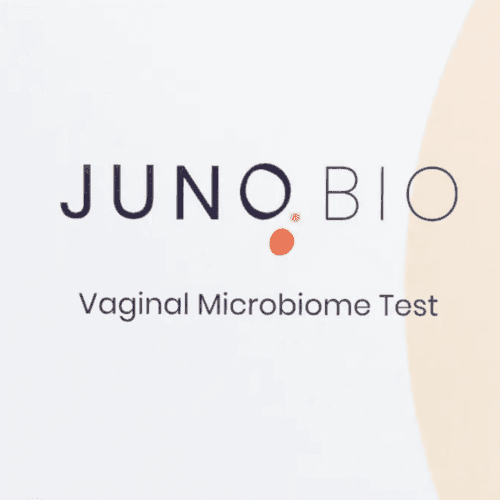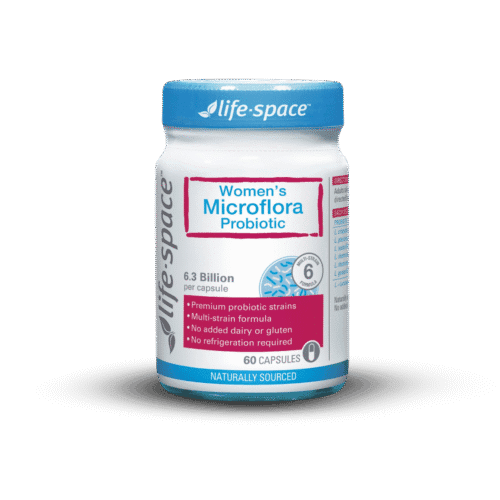A guide for healthcare practitioners
It’s well established that the female reproductive system is regulated by the complex interplay of the hypothalamus-pituitary–ovarian (HPO) axis, with negative and positive feedback loops dictating each cycle phase.
But where does sexual activity, arousal and orgasm fit into this? Here’s what the data show (and do not show) about sexual activity and hormone levels in naturally cycling female subjects. This post covers:
- What happens acutely (during arousal/orgasm)
- What happens over cycles (associations of sexual activity with reproductive hormone patterns and ovulation)
- Mechanistic and clinical implications
- Caveats and key knowledge gaps
Acute hormone changes during arousal and orgasm
Prolactin
One of the most replicable findings is that following orgasm (whether masturbation or intercourse), women show a marked rise in plasma prolactin.1,2 In one study3, prolactin levels climbed post-orgasm but not after only sexual arousal without orgasm.
Orgasm seems to trigger a hormonal spike of prolactin and may be a reliable marker of orgasm. This spike, which can reach up to 300%, lasts for at least an hour1, with other data showing another spike the following day at noon4.
There is currently no research examining prolactin levels in those who orgasm every day.
Oxytocin
There is evidence that oxytocin rises during sexual arousal and peaks around orgasm (in women). One paper suggests that orgasm in women corresponds with increased pituitary/oxytocin activity.5
Because oxytocin is implicated in pair bonding, uterine and vaginal contractions, and sexual response, this is biologically plausible.
Testosterone
Some modest studies show small increases in salivary testosterone in anticipation of sexual activity or intercourse, but findings in pre-menopausal women are inconsistent, and the effects are generally minor.
Cortisol
Data are mixed, with some women showing reductions in cortisol during erotic stimulation, others showing increases (particularly when arousal is accompanied by stress or performance anxiety).
Outside prolactin and oxytocin, acute changes in other hormones are weak or context-dependent.
Why these acute changes matter
The prolactin spike may serve as a satiety or ‘turn-off’ signal post-orgasm (similar to data in men6). Oxytocin may contribute to lubrication, uterine/vaginal contractions, partner bonding, and possibly increased pelvic blood flow.
Clinically, it suggests that when assessing hormonal states in women, one should be aware that arousal and orgasm may transiently affect circulating hormone levels, especially prolactin.
Sexual activity and estrogen, progesterone, LH and FSH
Longer-term associations (over weeks or cycles) between sexual activity and female reproductive hormones (estradiol, progesterone, leutinising hormone (LH) and follicle-stimulating hormone (FSH)) also exist.
A helpful study, Sexual activity, endogenous reproductive hormones and ovulation in premenopausal women (Prasad et al., 20147) followed 259 regularly-menstruating women (18–44 years of age, no hormonal contraception, not trying to conceive) for one or two cycles, assessing sexual history and intercourse frequency, and measuring serum estradiol, LH, FSH, progesterone and testosterone up to eight times per cycle.
Key findings include:
- Subjects who were ever sexually active (versus completely sexually inactive) had higher mid‐cycle LH (+23.4%), higher estradiol (+14.6%) and higher late‐luteal progesterone (+41.0%).
- They also had significantly lower odds of experiencing a sporadic anovulatory cycle compared to inactive subjects.
- Among sexually active subjects, frequency of intercourse during the study period was not associated with hormone levels or ovulation outcomes.
- The status of being sexually active (ever) was more strongly associated with ‘healthier’ reproductive hormone profiles than how frequently intercourse occurred.
Another study in an evolutionary and immune context found that Bolivian women with sexual partnerships had different inflammatory marker profiles (C-reactive protein) across the cycle compared with abstinent women, suggesting that sexual behaviour might moderate endocrine-immune cross-talk.
We can’t say ‘more sex means higher hormones’, but the data do suggest a relationship between sexual activity (versus none) and improved ovulatory and hormonal profiles.
Can sex impact hormone profiles and ovulation?
Sexual wellbeing and reproductive hormone physiology are interconnected, not totally independent. Here’s what we know so far:
- Sexual arousal or intercourse engages limbic/hypothalamic circuits, which interface with GnRH pulsatility and thereby LH/FSH secretion.
- The post-orgasm prolactin surge may transiently alter dopaminergic or other modulatory systems.
- Sex may affect stress, mood, sleep, and partner bonding, all of which contribute to HPO axis regulation (via cortisol, inflammatory markers, and autonomy of GnRH pulses).
- As seen in the Bolivian CRP study, sexual partnerships may affect immune/inflammatory status, which in turn influences ovulation and hormone production.
Practical implications for practitioners
- In irregular cycles, low estradiol/progesterone levels, or ‘silent’ ovulation (short luteal phase), it may be worth exploring sexual activity/partner status as one contextual factor (alongside BMI, sleep, stress, energy balance, and inflammation).
- When interpreting hormone assays (e.g. prolactin) in clinical or self-care settings, bear in mind that a recent orgasm may cause a transient prolactin elevation; ask about the timing of recent sex.
- For those tracking fertility or health, note that ‘ever having sex’ (versus none) appears associated with more robust ovulatory hormone patterns, though this is not the same as ‘the more sex the better’.
- Sexual activity is one of many modulators of hormonal health. Nutrition, menstrual regularity, sleep, energy availability, stress, medications (including contraceptives), and baseline health matter significantly more than just the frequency of intercourse.
Key caveats and gaps in the research
- Most acute hormone data are derived from small-sample laboratory studies, often not from large premenopausal cohorts.
- The association studies show correlation, not causation — being sexually active may be a marker of other health/resource-rich states, rather than the driver.
- Many studies exclude anyone using hormonal contraception
- There’s limited data on the longer-term endocrine rebound effects (e.g. what happens to ovulation/hormones after long periods of abstinence).
- Context matters, so partner relationship quality, stress levels, sexual satisfaction/quality, and mood states all impact how sexual activity interacts with endocrine systems.
FAQs
Yes, but not all hormones. Premenopause, the most consistent short-term change is a 300% rise in prolactin after orgasm, along with a brief oxytocin surge. These spikes usually resolve within a day or so and don’t represent a lasting hormonal shift, unless orgasm occurs very regularly.
Not directly. Orgasm doesn’t cause short-term changes in oestrogen or progesterone, but being sexually active tends to result in stronger ovulatory cycles, which naturally raise both hormones across the menstrual cycle (month).
Sex doesn’t trigger ovulation in humans, but those who are sexually active have more consistent ovulation and healthier mid-cycle hormone patterns than those who do not have any sex.
No. Research shows that being sexually active at all matters more than how often you have sex. Frequency doesn’t appear to boost oestrogen, progesterone, or ovulatory hormones beyond baseline levels.
Responses vary between people. Cortisol can fall when sex is relaxed, but can rise with stress, while testosterone may increase slightly during arousal or anticipation. These effects are mild and short-lived.
Prolactin peaks immediately after orgasm and remains elevated for at least 60 minutes; in some people, an additional modest rise may be detectable the next day.
Possibly. Studies show that those who are sexually inactive may experience lower mid-cycle oestrogen and progesterone and more anovulatory cycles. These effects seem to reverse once sexual activity resumes.
Yes, if it leads to orgasm. Masturbation triggers similar prolactin and oxytocin responses, though intercourse often produces a slightly stronger effect due to additional emotional and physical stimulation.
Indirectly, yes. Sex can help balance stress and mood hormones such as oxytocin and endorphins, which may ease cramps or tension around menstruation, though sex isn’t a proven treatment for premenstrual syndrome (PMS).
References
- 1.Krüger T. Orgasm-induced prolactin secretion: feedback control of sexual drive? Neuroscience & Biobehavioral Reviews. Published online January 2002:31-44. doi:10.1016/s0149-7634(01)00036-7
- 2.Exton, MSP, Bindert, AM, Kruger, TM, Scheller, FM, Hartmann, UP, Schedlowski, MP. Cardiovascular and Endocrine Alterations After Masturbation-Induced Orgasm in Women. Psychosomatic Medicine. 1999;3(61):280-289. https://journals.lww.com/bsam/abstract/1999/05000/cardiovascular_and_endocrine_alterations_after.5.aspx
- 3.Exton NG, Chau Truong T, Exton MS, et al. Neuroendocrine response to film-induced sexual arousal in men and women. Psychoneuroendocrinology. Published online February 2000:187-199. doi:10.1016/s0306-4530(99)00049-9
- 4.Kruger THC, Leeners B, Naegeli E, et al. Prolactin secretory rhythm in women: immediate and long-term alterations after sexual contact. Human Reproduction. Published online February 14, 2012:1139-1143. doi:10.1093/humrep/des003
- 5.Huynh HK, Willemsen ATM, Holstege G. Female orgasm but not male ejaculation activates the pituitary. A PET-neuro-imaging study. NeuroImage. Published online August 2013:178-182. doi:10.1016/j.neuroimage.2013.03.012
- 6.Krüger THC, Hartmann U, Schedlowski M. Prolactinergic and dopaminergic mechanisms underlying sexual arousal and orgasm in humans. World J Urol. Published online May 12, 2005:130-138. doi:10.1007/s00345-004-0496-7
- 7.Prasad A, Mumford SL, Buck Louis GM, et al. Sexual activity, endogenous reproductive hormones and ovulation in premenopausal women. Hormones and Behavior. Published online July 2014:330-338. doi:10.1016/j.yhbeh.2014.06.012
Get a fresh perspective with a qualified, experienced vulvovaginal specialist naturopath.
This product has multiple variants. The options may be chosen on the product pageThe most comprehensive vaginal microbiome test you can take at home, brought to you by world-leading vaginal microbiome scientists at Juno Bio.
Easy-to-use BV and AV treatment program.
Promote and support a protective vaginal microbiome with tailored probiotic species.






